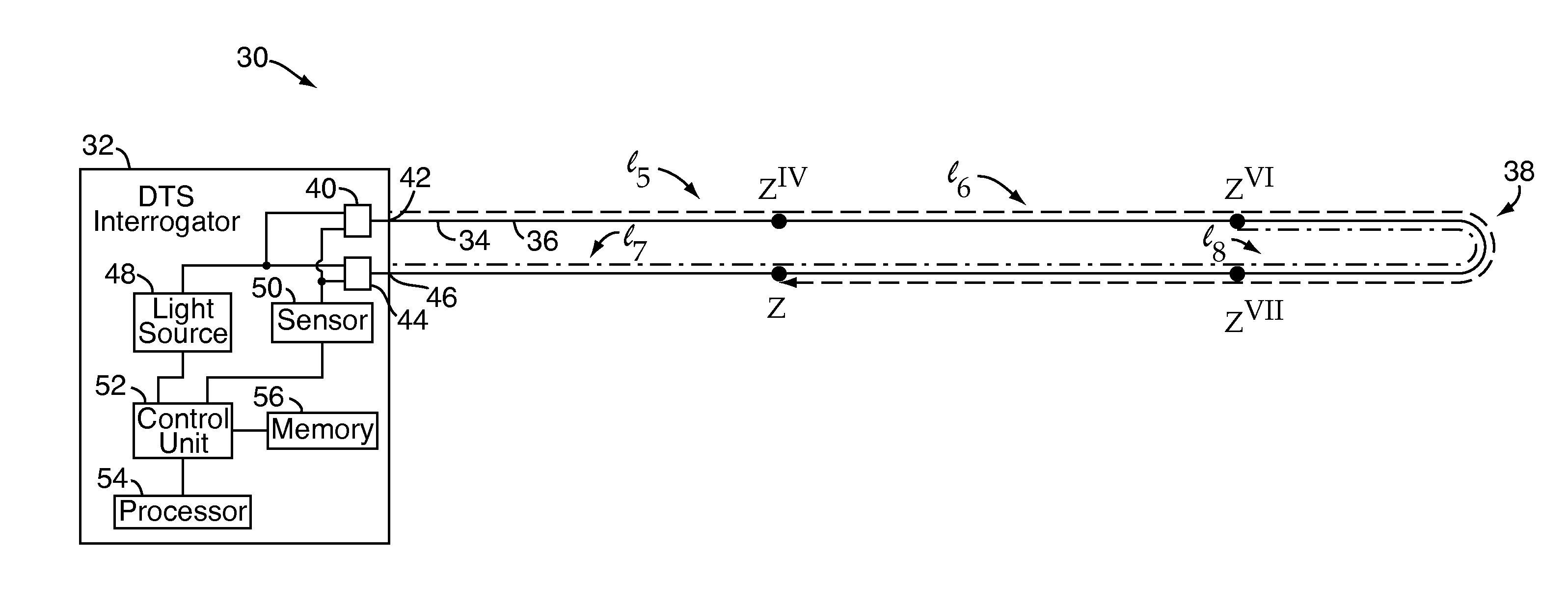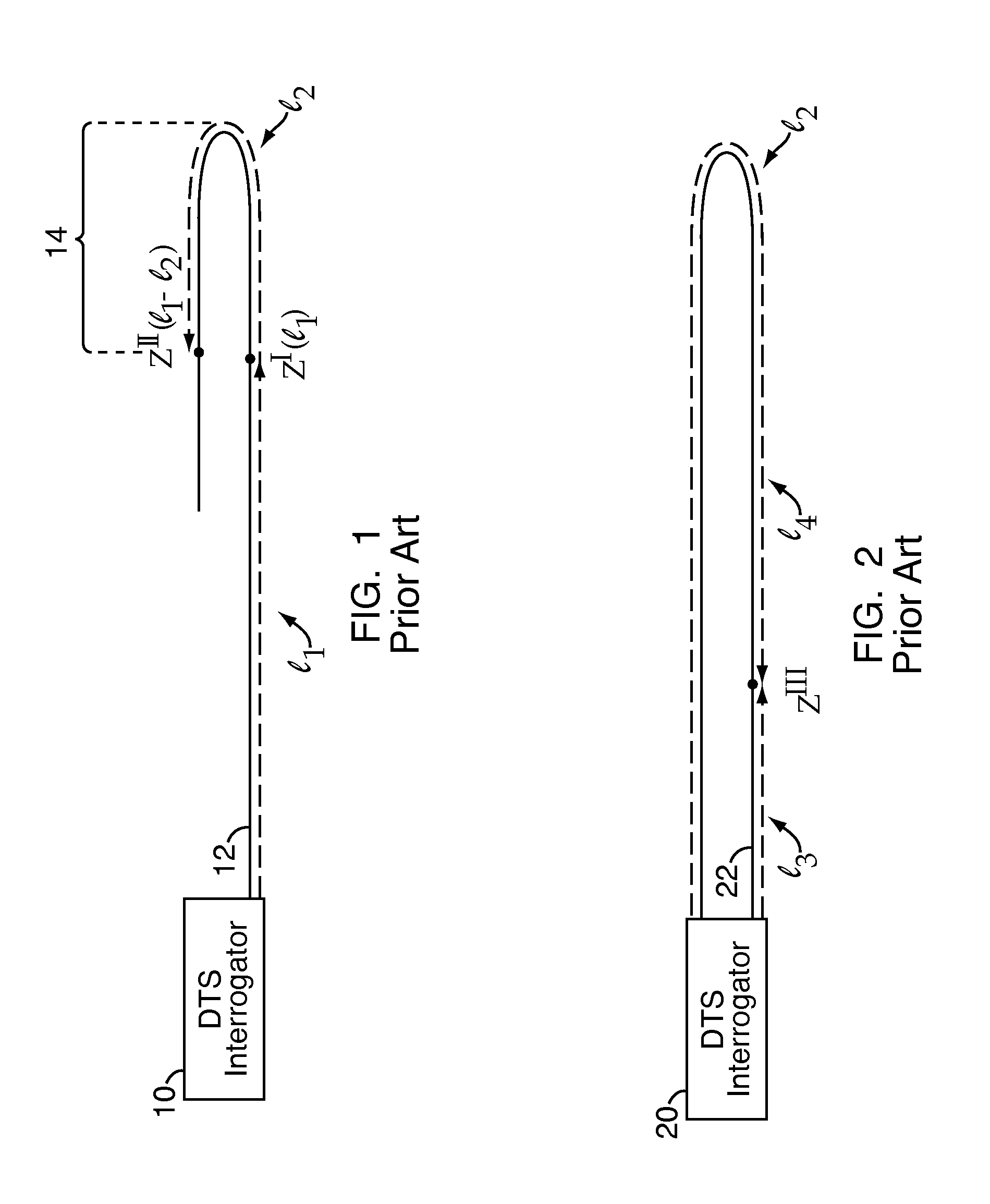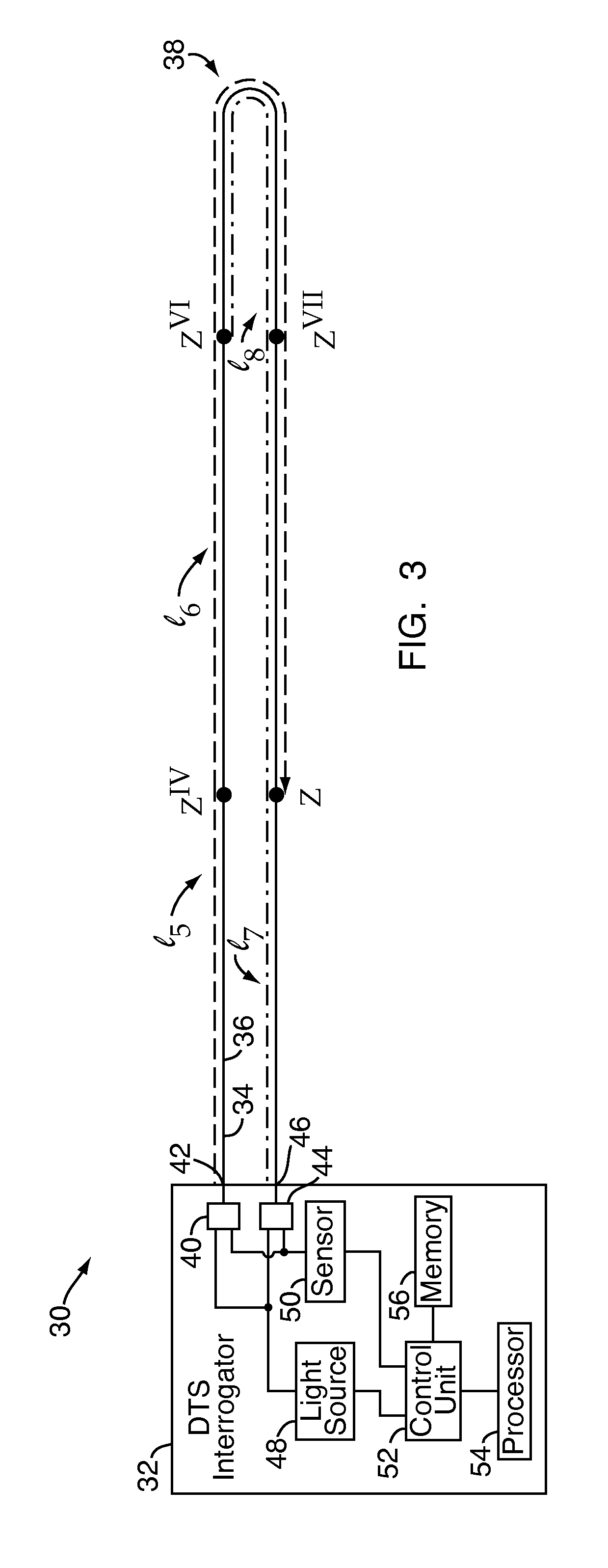Method for performing optical distributed temperature sensing (DTS) measurements in hydrogen environments
a technology of hydrogen environment and temperature sensing, applied in the direction of instruments, heat measurement, optical elements, etc., can solve problems such as errors that are associated with non-temperature-induced loss
- Summary
- Abstract
- Description
- Claims
- Application Information
AI Technical Summary
Problems solved by technology
Method used
Image
Examples
Embodiment Construction
[0025]Referring to FIG. 3, a distributed temperature sensing (DTS) system 30 is shown. The DTS system 30 includes a DTS interrogator 32 that has two-channel capacity and a sensing cable 34 that includes a sensing fiber 36 with a turnaround 38. The turnaround 38 has a modal filter integrated therein. A first channel 40 of the DTS interrogator 32 is connected to a first end 42 of the sensing fiber 36. A second channel 44 of the DTS interrogator 32 is connected to a second end 46 of the sensing fiber 36. A complete optical path is formed between the two channels 40, 44 of the DTS interrogator 32 through the sensing fiber 36 and the turnaround 38.
[0026]The sensing fiber 36 is made of pure silica, which has hydrogen resistant characteristics, and is enclosed with a heat- and hydrogen-resistant sheath. By “hydrogen resistant”, it is meant that the sensing fiber 36 is designed to tolerate the presence of hydrogen at high temperatures, such as up to 300° C., and is, generally, not susceptib...
PUM
| Property | Measurement | Unit |
|---|---|---|
| temperatures | aaaaa | aaaaa |
| operating temperatures | aaaaa | aaaaa |
| temperatures | aaaaa | aaaaa |
Abstract
Description
Claims
Application Information
 Login to view more
Login to view more - R&D Engineer
- R&D Manager
- IP Professional
- Industry Leading Data Capabilities
- Powerful AI technology
- Patent DNA Extraction
Browse by: Latest US Patents, China's latest patents, Technical Efficacy Thesaurus, Application Domain, Technology Topic.
© 2024 PatSnap. All rights reserved.Legal|Privacy policy|Modern Slavery Act Transparency Statement|Sitemap



